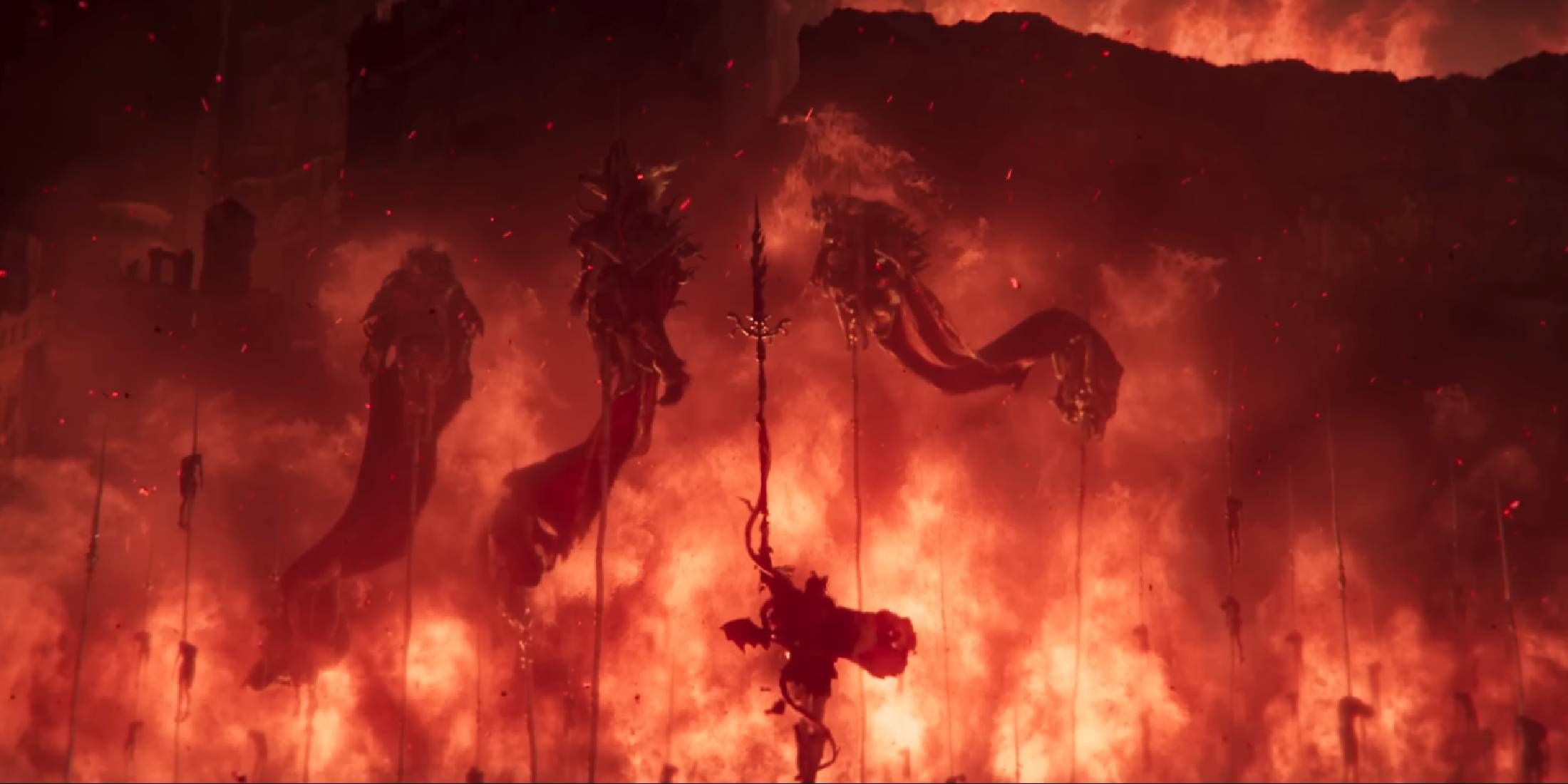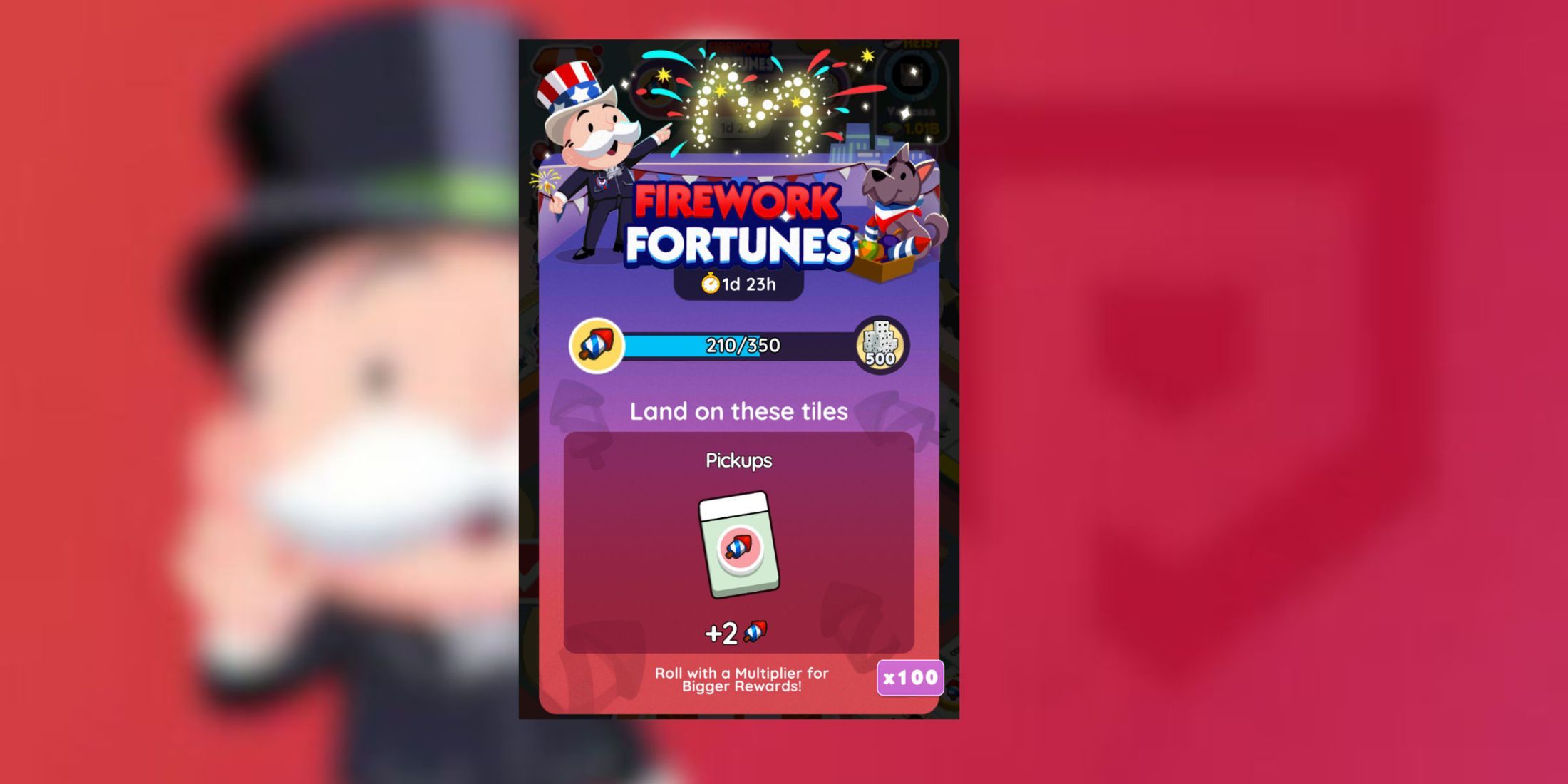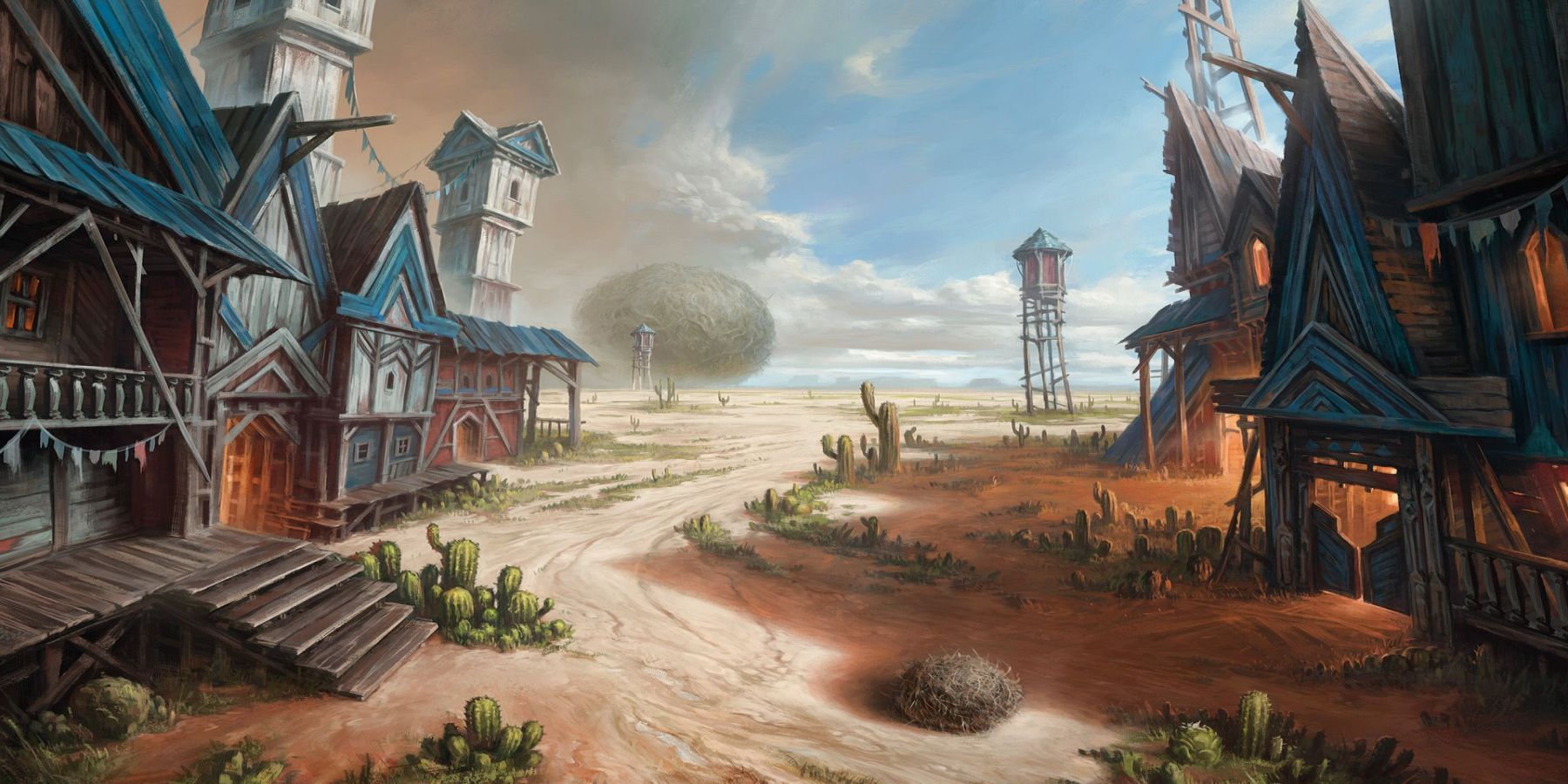Magic: The Gathering's multiverse of planes has encompassed an impressive range of worlds with unique settings over this time, many of which were impacted and altered to various degrees as its epic ongoing saga continued. Touching on elements from political intrigue to Lovecraftian in nature, Magic: The Gathering's lore and narrative is as expansive as any multiverse.
One of the repercussions from the recent March of the Machine arc, after a coordinated invasion enacted by one of the franchise's major villains, the Phyrexians, is known as Omen Pass. This created portals to a previously hidden plane that holds untold riches and dangers in equal measure. Game ZXC was invited to a digital press event hosted by publisher Wizards of the Coast, where vision design lead Mark Rosewater, set design lead Dave Humphreys, and editing lead Matt Tabak spoke about various aspects of the upcoming Outlaws of Thunder Junction expansion and how its Wild West-meets-MTG vision was brought to life.
Outlaws of Thunder Junction launches April 19, 2024 .
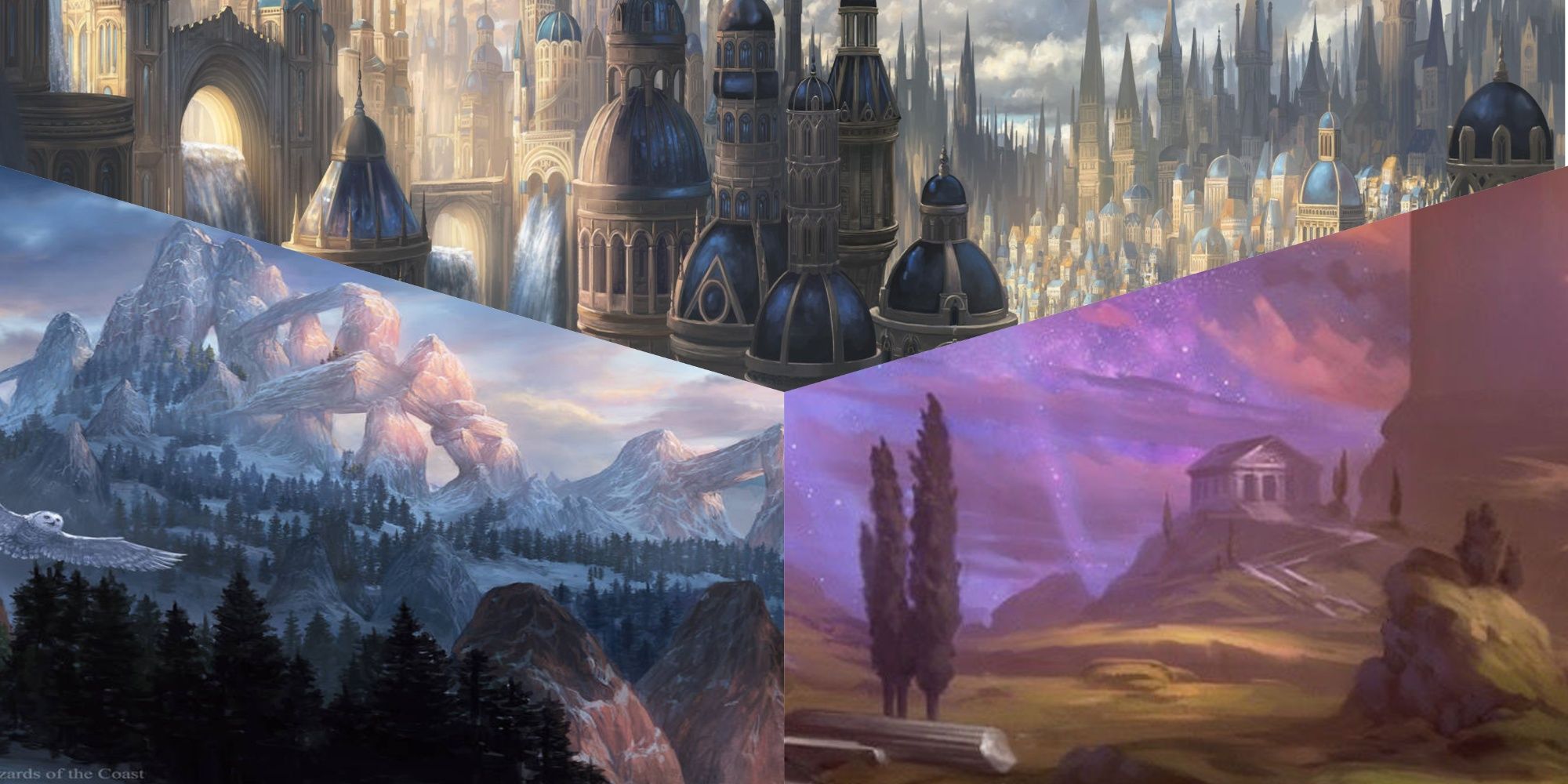
The 6 Best Magic: The Gathering Planes To Live In
The planes of Magic: The Gathering feature all sorts of landscapes, with some offering a great home for weary adventurers or starry-eyed students.
How Magic The Gathering's Western-Styled Outlaws of Thunder Junction Set was Envisioned and Designed
A Wild West Magic: The Gathering Plane Was a Longtime Dream for Designers
All three designers admitted that a Wild Western-flavored set had long been on the wishlist for a Magic: The Gathering expansion and adventure. With the setup of the previous storyline allowing them to create an entirely new world, the opportunity for a Western frontier setting fortuitously presented itself. This also helped in writing the narrative, as it was decided early on that Outlaws of Thunder Junction would be based around a recognizable structure: that of a nefarious gang gearing up to pull off a major robbery.
In service to that, the team noted that the natural next step was to pull a range of shadier figures from across Magic: The Gathering's history and reimagine them as black hat bandits in Thunder Junction's lawless plane. In this case, the Fomori civilization had long ago built a vault containing a hoard of their most coveted treasures and concealed it on the plane. The outlaws arrive, discovering its existence and seeking to plunder the cache.
How Outlaws of Thunder Junction Incorporates Classic Western Elements Into Magic: The Gathering
All three developers emphasized just how fun creating thematically fitting cards and abilities for Outlaws of Thunder Junction was, describing it as "a joy to design." The group stated that they had a lot of freedom to experiment and try ideas that had been percolating for a while, but weren't quite the right fit for prior sets and visions. Thunder Junction provided the perfect platform to finally introduce a Western world in MTG and incorporate stylized mechanics that complemented its tone like saddling and mounting, which were also noted to have been fan-requested inclusions for many years.
Numerous other new and updated versions of mechanics like plot cards, the Commander bounty system, sprees, and vault treasures all emerged from productive sessions and playtesting for Outlaws of Thunder Junction. The look and feel of the era is also reflected in the artwork, with sweeping mesa vistas and forbidding desert landscapes, in addition to special treatments like the alternate wanted poster and newspaper borders. The team also endeavored to give fans some surprises in the form of notable planeswalkers from Magic: The Gathering's history as well as other familiar fan-favorite characters who they felt would be a good fit for the framework. Thunder Junction also has its share of humorous angles, like Holy Cow, and a lot of amusing flavor text balancing out some of its more serious angles.
The trio discussed other elements of world building, specifically the trickiness of portraying items like period firearms and practices versus Magic: The Gathering's more traditionally fantasy-based grounding, and how they worked to incorporate these general aesthetics with a more MTG-friendly bent. For example, gunslingers were changed to spellslingers, essentially filling the same role but avoiding some of the negative connotations that may have come along with the original depiction. The team noted being mindful of respectfully representing characters and ideas based on indigenous American cultures and tribes in Outlaws of Thunder Junction as well.
With all these parts in place, Outlaws of Thunder Junction is ready to take players on a Wild Western romp through the world of Magic: The Gathering when it releases on April 19, 2024.
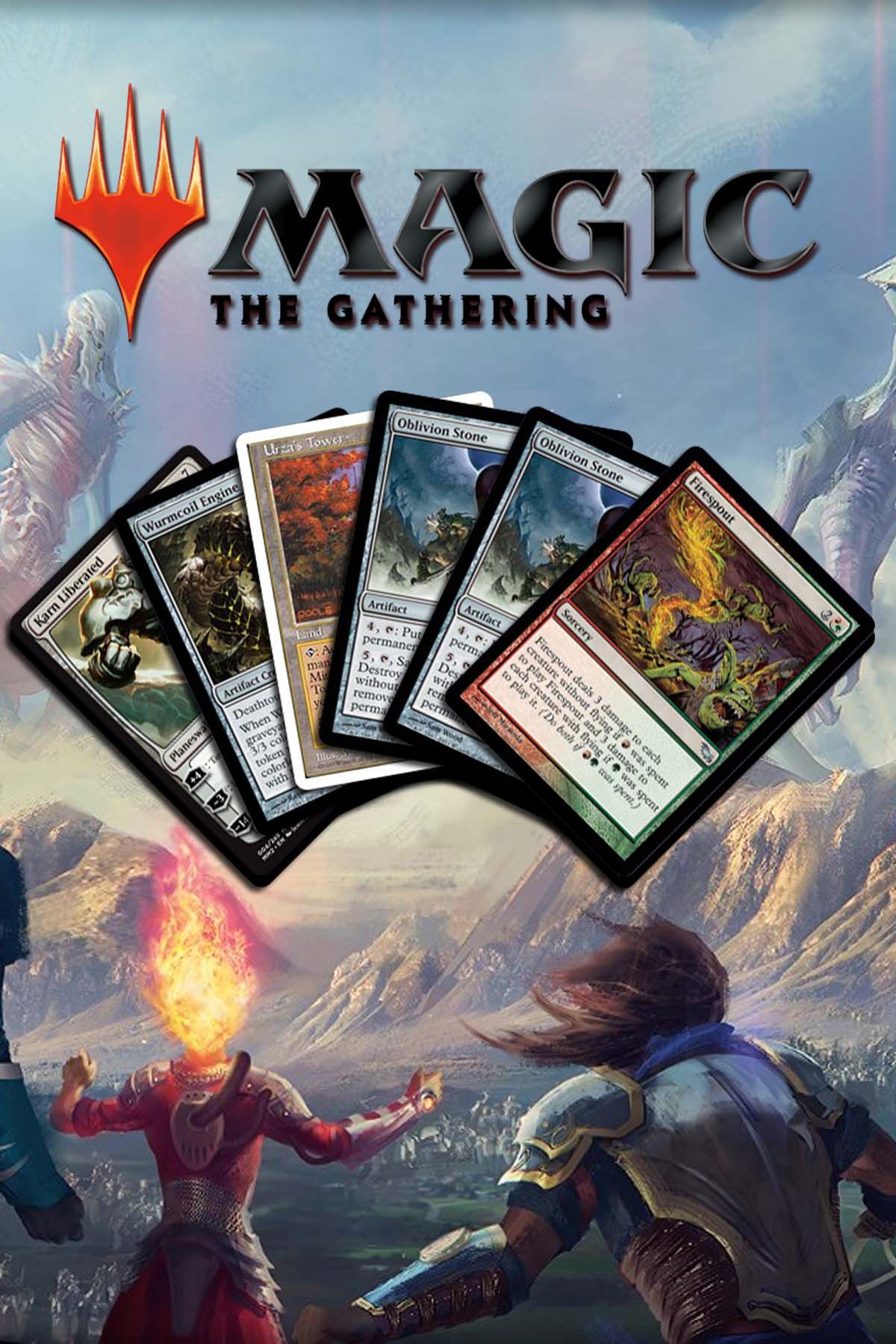
Magic The Gathering
Magic the Gathering is a tabletop and digital collectable card game created by Richard Garfield and released in 1993 by Wizards of the Coast. Players take on the role of a Planeswalker and use various cards to battle other players by casting spells, summoning creatures, or utilizing artifacts. It features two main rule categories, constructed or limited, and can be played by two or more players at a time.
- Franchise
- Magic: The Gathering
- Original Release Date
- 1993-00-00
- Publisher
- Wizards of the Coast
- Age Recommendation
- 13+
